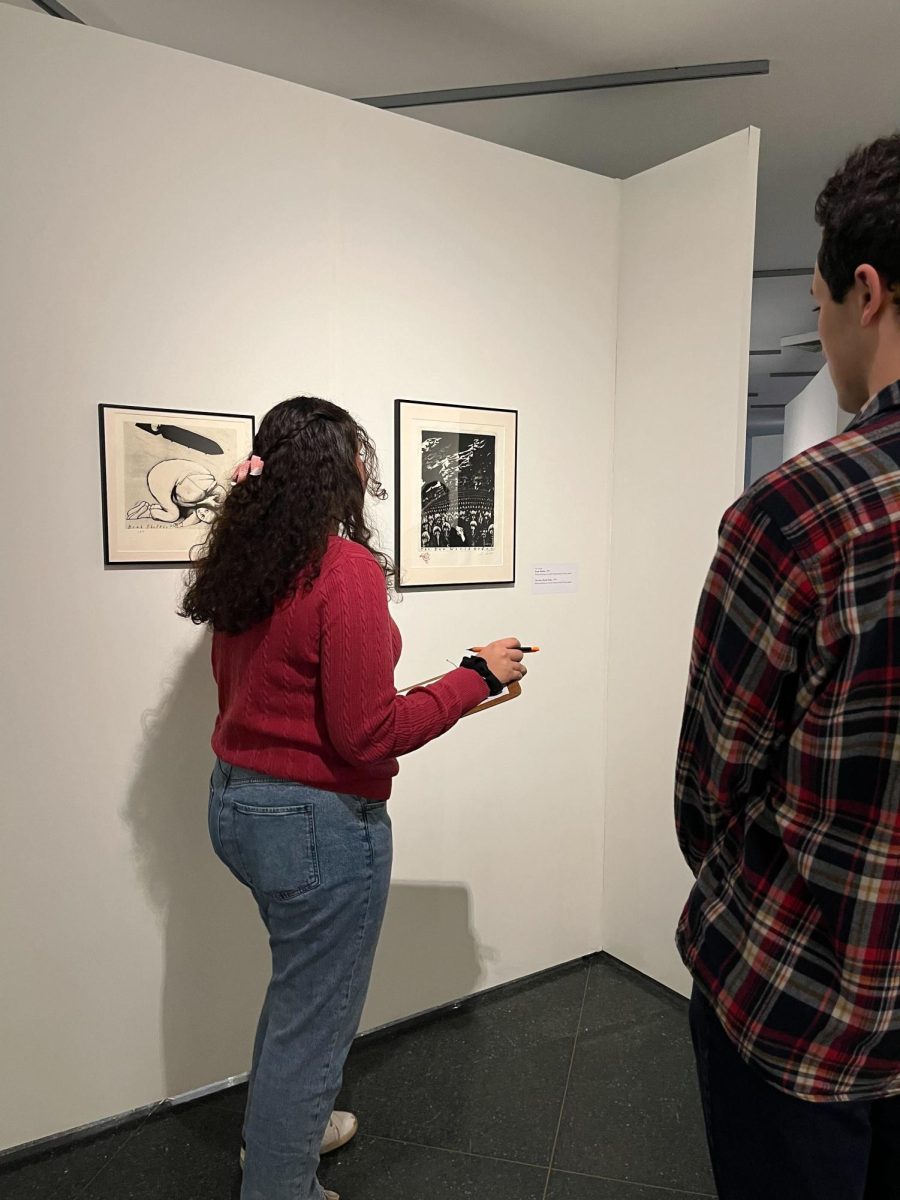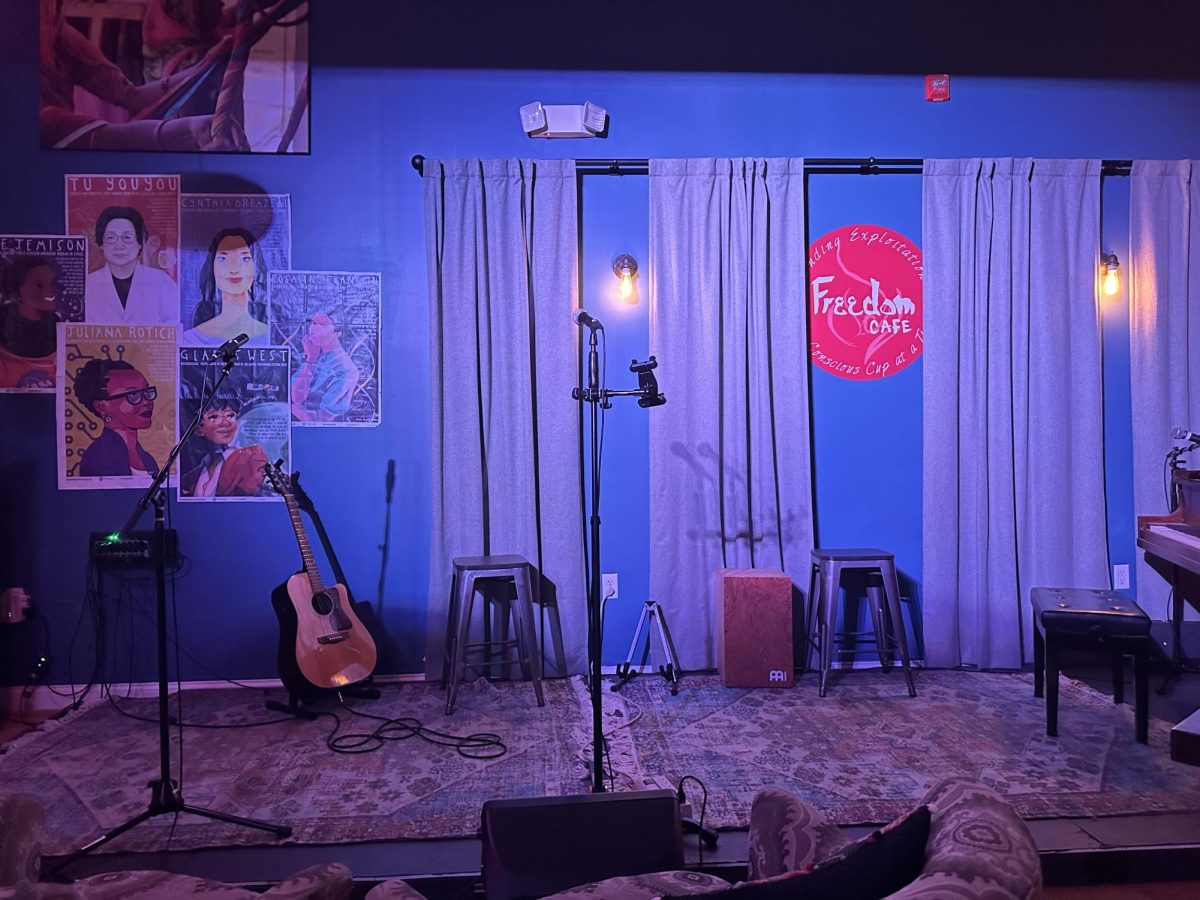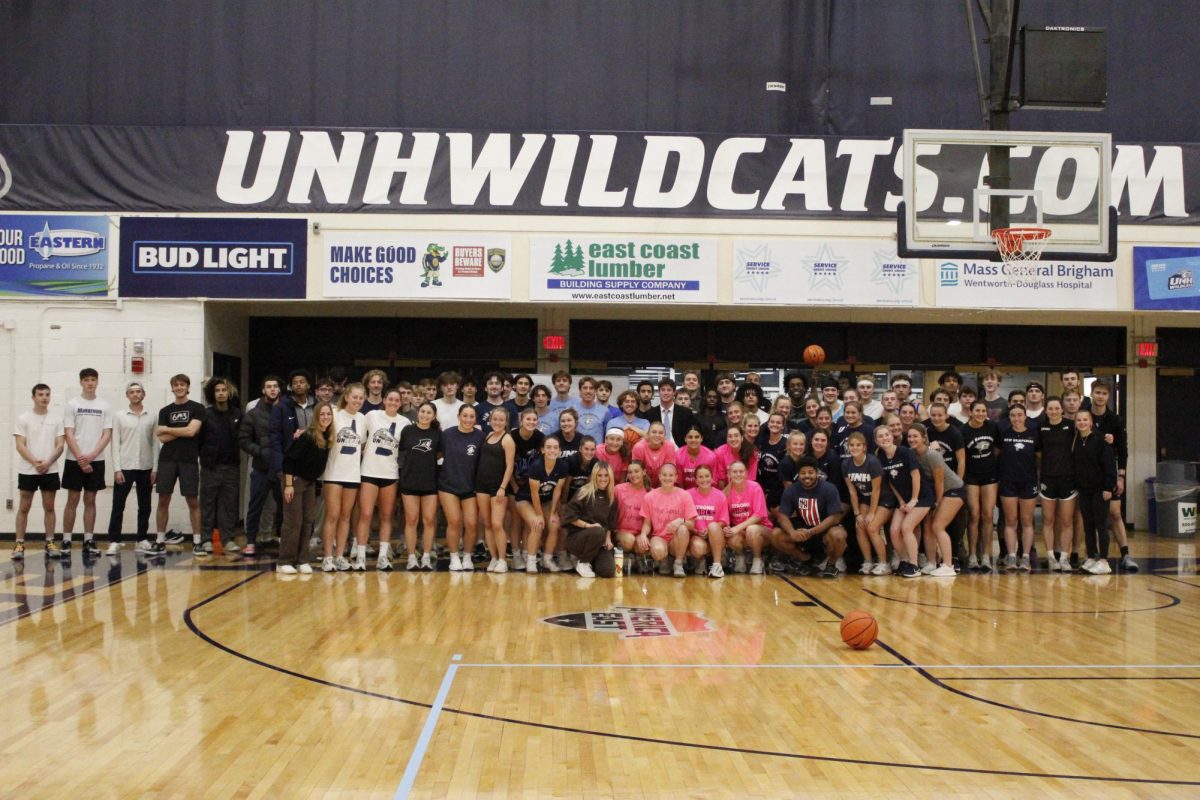Down the dimly lit hallway of the Paul Creative Arts Center (PCAC) sits the office of the art and art history department. A cozy waiting area sits outside the eclectic office of Ben Cariens, department head. Inside, he scribbled away on his yellow legal notepad, meticulously writing the names of his students that he advises and the notes corresponding to the classes of their upcoming semester.
Pushing up his glasses and taking a deep breath, Cariens began to carefully explain the happenings of UNH’s art and art history department as well as how liberal arts culture has been taken over by commercialization and institutionalization.
“In a STEM-dominated culture, it feels we are always having to defend the purpose, the validity, the utility, and the benefits of [a liberal arts education] in the way that no one in STEM or business has had to defend,” said Cariens. He stressed that liberal arts programs always seem to be on the “chopping block” when institutions need to make cutbacks.
In President James Dean’s Monthly Update #56, he addressed the need to make difficult decisions regarding the increased financial strain. One line of the email reads, “I have instructed Unit Leaders to carefully review and adjust their current fiscal year budgets to reduce our anticipated expenses by approximately 4%.” This seemingly small percentage disrupts growth periods for many departments and instead forces them to redefine their fundamentals in terms of education.
The art department, like many other departments, has been asked to make changes, and some of those changes influence the classes offered in the spring. Cariens has been tasked to reevaluate the section numbers, classes offered and the payroll/hiring process of adjunct faculty.
“In one of my art history classes, the professor sent out a canvas announcement essentially saying that if anyone had any interest in declaring a major or minor in the department that they would have a better chance at getting into some of the classes,” says Natalia Tomahatsch, a sophomore art history major, who, like many other students, is scrambling to see if their desired classes will be offered at the times that work best for them.
“We have been able to get away with decreasing sections for courses that we have many of. Thankfully, this does not have much impact on our majors and minors, but I think it is going to have a significant impact on the students who take those classes for discovery requirements,” says Cariens.
The decrease in sections also takes away the opportunity for niche classes that are often offered by adjunct faculty, like interior design, which was offered for the first time this semester. This impact takes away the exposure that leads to major or minor declarations as well as the exploration of certain areas in the art field.
“UNH is a huge STEM and research school, so obviously so much of the money gets funneled into most of those programs, and athletics, of course. So I feel as though UNH doesn’t take the art programs into consideration, especially when I see the treatment that some of the others are given, even if there is communication within colleges, chairs, and professors to make these decisions,” says Tomahatsch.
So why are Liberal Arts programs on the chopping block? Liberal Arts is defined as studies that are intended to develop general intellectual capacities, such as reason and judgment, as opposed to more ‘professional’ skills in STEM and business.
“The benefits have always been foundational and less directed, it develops the whole person, the whole citizen, a sense of being in the world. It develops independent thought and analysis,” says Cariens.
The stigma and culture around liberal arts students and their ambitions may stem from their parents’ worry.
“In the later generations, we [the parents] were brought up in a ‘Wolf of Wall Street’ generation, which made it seem more important that your career made you money and not be something you love,” said James Sullivan, a Boston Globe journalist and professor at Emerson College. Cariens offers an example of this where two different prospective students, one who wants to be a chemist may spend less time explaining their intended career path than one who wants to be a poet.
“As a parent, I do understand those tensions, but culturally I don’t think we’ve been that good at highlighting the counterpoint to that argument,” said Cariens. While many kids in the newer generations are beginning to embrace their creativity, there is still a sense of weariness to what they want to study if that area is in the liberal arts field.
“[My parents have] been very supportive and have always told my siblings and I to just do what we loved and not what we thought would make money. And I’m honestly really grateful for that because I’m terrible at STEM-related things,” says Tomahatsch.
UNH is one of many institutions that has already started making cutbacks not only to its liberal arts department, but to many other departments to lessen their financial burden. Since liberal arts are often already stigmatized and low-funded, these cutbacks can have a bigger impact. In addition to the art/art history department, many other College of Liberal Arts (COLA) departments will have to make these tough decisions. This is significant, as COLA houses the majors of around one-third of the UNH undergraduate population.

























